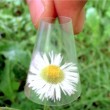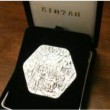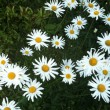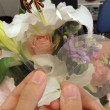Learning transparent nanopaper & cellulose nanofibers
ver 1.3 (2 Sep 2019, add Section 8)
ver 1.2 (19 Aug 2019, add the Section 7)
ver 1.1 (18 Aug 2019, minor changes without questions)
ver 1.0 (14 Aug 2019, by nogi)
Contents
Section 1. transparent, translucent & opaque
Section 2. about the transparency (Q1-4)
Section 3. Transparent + Transparent = Transparent ? (Q5)
Section 4. Two transparent materials using cellulose nanofibers (Q6)
Section 5. Transparent composites (Q7-8)
Section 6. Transparent nanopaper (Q9)
Section 7. Control the transparency in nanopaper (Q10-15)
Section 8. Control the thermal resistance in nanopaper (Q16-20)
Section 1. transparent, translucent & opaque
See these youtue & learn them
https://www.youtube.com/watch?v=p2DS_wgrEBc
https://www.youtube.com/watch?v=P6Uihn8V3h4
Section 2. about the transparency
Q1 Read this URL & answer the questions
http://dx.doi.org/10.1063/1.4804361
Q1-1. Explain Fresnel reflection. (pickup the sentences)
Q1-2. How much the surface reflection (%) and the theoretical total transmittance (%) at the transparent medium in the air. The refractive index of the medium and the air are 1.5 and 1.0, respectively.
Q1-3. How much the surface reflection (%) and the theoretical total transmittance (%) at the transparent medium in some gas. The refractive index of the medium and the gas are 1.5 and 1.5, respectively.
Q2 Read this URL & pickup answer equations or sentences.
http://file.yizimg.com/175706/2011120519401287.pdf
Q2-1. What is total luminous transmittance “Tt” ? Please pick up the equation.
Q2-2. What is diffuse luminous transmittance “Td”? Please pick up the equation.
Q2-3. What is haze? Please pick up the definition sentences and equation.
[TIP] In the scientific literature, the term of “where” is always used when the equations are defined.
When there is the equation sentence without “where”, it has already defined or it is just a derivation of an equation.
let’s see here
https://en.wikipedia.org/wiki/Ideal_gas_law#Combined_gas_law
“PV/T=k, where P is the pressure…., V is the volume…”
https://en.wikipedia.org/wiki/Newton%27s_laws_of_motion
“F=ma, where F is …., m is ….”
Q3. In transparent materials with no light-absorption, a part of incident light occurs light reflection at the surface, and the rest of incident light goes through the materials. The percentage of light reflection is derived from the Fresnel’s reflection equation. The transmitted lights consist of the regular lights which transmit straightly, and the diffused lights which transmit with scattering. When the regular transmittance is measured, it is constant regardless of the distance between the sample & the detector, due to its straight transmission. However, the diffuse transmittance depend on the distance between the sample & the detector, due to its scattered transmission.
In the below questions, the incident light is expressed in “IL”, the reflection light is “RL”, the regular light is “Tr”, the diffused light is “Td”, and the transmitted light is “Tt”.
Q3-1. Please write an equation which expresses the relationship of Tt, Td, and Tr.
Q3-2. Please write an equation which expresses the relationship of IL, RL, Td and Tr.
Q3-3. Please write an equation of Haze (H), using Tt and Tr
Q4. Although the glass and the frosted glass are quite different appearance, their total transmittances are the same. Since their refractive index are the same, their surface reflections are also the same. So, their different appearance depend on the regular and/or diffuse transmittances.
Q4-1. Which is higher diffuse transmittance in them? Which is higher regular transmittance in them?
Q4-2. When some objects are seen through a glass, it is clear appearance regardless the distance between the glass and the object. Please explain the reason using the term of “regular transmittance” and “distance”.
Q4-3. What is the best way to see some objects clearly through a frosted glass? Please explain without surface smoothness such as polishing or coating with tape. Please explain it and its reason, using the term of “diffuse transmittance” and “distance”
Surface smoothness such as polishing or coating with tape are one of the ways. However, please explain other ways.
Section 3. Transparent + Transparent = Transparent ?
What is the difference between “transparent” and “invisible” ?
Air is a transparent, and it is usually invisible. But, is it always invisible??
You can not see the air around you, but you can see the air in the water.
You know it, but you might be difficult to understand or explain it…
Let’s see the picture in the below URL.
http://www.nogimasaya.com/research/detail/what-is-transparent/
A left glass rod is visible, but a right one is invisible. It is the key point of “refractive index”. The refractive index of air is 1.0, that of glass is 1.5. The left liquid is water, and its refractive index is 1.3. The right liquid is sugar syrup, and its refractive index is 1.5.
Q5-1. How much the surface reflection (%) in the right glass rod (in the sugar syrup water)? (Tip : Q1-3)
Q5-2. Please explain why the right glass rod is invisible.
Q5-3. How much the surface reflection (%) in the left glass rod (in the water)?
Q5-4. Please explain why the left glass rod is visible.
Q5-5. When you shake a sparkling water, their bubbles in the water is white, not transparent. Please explain the bubbles are white, using the keywords of “refractive index”, “reflection”, and ” diffused light/scattered light”.
Section 4. Two transparent materials using cellulose nanofibers
Q6. There are two types of optically transparent materials, using cellulose nanofbiers. Picking up the answer sentences from the articles, please explain these materials & the reason why they are transparent.
http://dx.doi.org/10.1063/1.4804361
Section 5. Transparent composites
In this section, we will learn about how to make transparent composites, focusing of the refractive index matching.
A composite material is a material made from two or more constituent materials. The major component is called as “matrix”, and the minor components is called “filler” or “reinforcements”.
Fibre-reinforced plastic (FRP) is a famous composite material made of a polymer matrix reinforced with fibres. The fibres are usually glass (in fibreglass) or carbon (in carbon fiber reinforced polymer). The polymer is usually an epoxy, vinyl ester, or polyester thermosetting plastic. FRPs are commonly used in the aerospace, automotive, marine, and construction industries.
Q7. Theoretically, the refractive index matching is simple/ easy concept. In the practical, however, it is very hard to realize.
After reading this article, please pick up the answer sentences.
https://doi.org/10.1063/1.2146056
Q7-1. How much the accurate matching of refractive indexes do we need, when we used micro-sized fillers?
Q7-2. The nanosized fibers are free from light scattering, because its diameters are enough smaller than the visible light wavelength. How much the range of refractive index can be acceptable for cellulose nanofiber to make the transparent composites ?
Q7-3. Using the micro-sized fillers, the accurate matching is a disadvantage against the atmosphere temperature change. Please explain the detail in the epoxy-resin and glass composite. (temperature range, refractive index and transparency change)
Q7-4. In the above question, you explained the epoxy/glass composites changed their transparency against the temperature change.
To compared with it, in this article, BC (bacterial cellulose) is used as the cellulose nanofibers (filler), and acrylic resin was used as the matrix.
How about the transparency of cellulose nanofiber composite against the temperature change. Please pick-up the answer sentences, which include the temperature and refractive index change.
Q8. To review your understanding, let’s have a “thought experiment”, how to make the transparent composites. Here, we set the refractive index glass to 1.5, epoxy resin to 1.3, cellulose to 1.5, and air to 1.0.
Q8-1. Fibre-reinforced plastic consist of glass fiber (their width is micro-size) and epoxy resin. The glass fiber itself is transparent and the epoxy resin itself is also transparent. But, there is no transparent FRP using glass fiber and epoxy resin in our daily life. Please explain the reason, except for the fiber width.
Q8-2. What kind of matrix plastics should you prepare to make the transparent composite using the micro-sized GLASS fibers as the filler?
Q8-3. Please write two answers. What kind of glass fiber should you prepare to make the transparent composite using the matrix plastics with the refractive index of 1.3
Q8-4. What kind of matrix plastics should you prepare to make the transparent composite using the micro-sized PULP fibers as the filler?
Q8-5. Paper made from cellulose fibers (pulp fibers) is one kind of the composites, since they consist of two constituent materials of “cellulose” and “air”. Air itself is transparent and cellulose itself is also transparent, paper is not transparent. Please explain the reason.
Q8-6 There are three ways to make paper transparent. Please explain three methods, considering that the cellulose fibers are matrix (major components) and the air is the filler (minor components) in the paper. . It is a complete “thought experiment” !! So you can obtain any property or size in cellulose and air in this question. Let’s try to get the answers.
Under the construction from here. So, you don’t need to proceed.
Section 6. Transparent nanopaper
Making nanopaper is 3 steps.
see Fig 1 in this URL
http://www.nogimasaya.com/research/detail/onenanofiber/
First one is purification of wood chips to make cellulose pulps.
Second one is the mechanical nanofibrillation of cellulose pulps.
Third one is the drying of cellulose nanofiber dispersion.
After drying, we got cellulose nanopaper.
Q9. Why the nanopaper is transparent?
After reading the original these articles,
https://doi.org/doi:10.1002/adma.200803174
http://dx.doi.org/10.1063/1.4804361
please pick up the answer sentence from these, which referred Adv Mater 2009.
https://doi.org/doi:10.1039/c7ra12672g
https://doi.org/doi:10.1038/srep17254
Section 7. Control the transparency in nanopaper
The transparency of nanopaper is controlled by some ways. First one is controlled by the starting pulp and/or pre-treatments, second one is by density, the third one is by concentration of nanofiber dispersion, and the fourth one is drying humidity. However, third one and fourth one are only for some particular conditions. In this section, you will understand the detail.
Q10. [starting pulp and/or pre-treatments] The below article mainly reported 3 nanopapers (Fig. 1a, 1b, and 1c). Fig. 1a and 1c are transparent nanopaper, and Fig. 1b is hazy nanopaper.
https://pubs.acs.org/doi/abs/10.1021/acsami.5b06915
Q10-1. In Fig 1a of transparent nanoaper, please answer what kind of pulp are used & how many times nanofibrillation?
Q10-2.In Fig 1b of translucent nanoaper, please answer what kind of pulp are used & how many times nanofibrillation?
Q10-3. In Fig 1c of transparent nanoaper, please answer what kind of pulp are used, how many times nanofibrillation, and the additional treatment name (2word)?
Q10-4. The additional treatment has 2 advantades. What are they? Let’s consider by yourself, not picking up the sentence.
Q10-5. There are 2 ways to obtain the transparent nanopaper. Please tell the the starting pulp and/or pre-treatments.
Q11. [starting pulp and/or pre-treatments] Fig 4 shows three nanopaper with various haze of 86.6%, 38.3% and 5.5%.
Why is nanopaper (a, c) so high hazy? Please pickup the answer sentences, which discussed about the fiber width and their shape.
http://dx.doi.org/10.1038/srep41590
Q12. [starting pulp and/or pre-treatments] Table 1 shows the nanopaper haze in various TEMPO nanopaper. These TEMPO nanopaper were made from the different TEMPO pulp, the same nanofibrillation condition, and the same drying procedures.
https://pubs.acs.org/doi/abs/10.1021/acsami.5b06915
Q12-1. What control the TEMPO nanopaper haze?
Q12-2. Two (or three) parameters in TEMPO nanopaper was changed by its increasing. Please explain what they are & how they parameter changed.
Q13. [Density] In Fig.1, all the nanopaper are made from the holocellulose pulps (the same nanofiber dispersion). Although using the same nanofiber, their appearance are quite different, but their total transmittance are roughly the same.
What is the reason? Please pick up the answer sentnces (2-3 lines), considering below the points.
How much are their total transmitance values?
In these nanopaper, something is the same in their procedures, but something is different (changed) at their properties.
http://dx.doi.org/10.1038/srep41590
Q14. [concentration of nanofiber dispersion] Kasuga et al. reported that “Cellulose nanofibers were homogeneously distributed in the low-concentration dispersion but tended to aggregate inhomogeneously in the high-concentration dispersion. The inhomogeneous aggregations cannot produce clearly transparent nanopaper with haze values of less than 10%.” So, using the particular cellulose pulps/nanofibers, the haze of nanopaper sometimes are changed by the concentration of nanofiber dispersion. Howverer, its mechanism or reason are still unknown..
https://doi.org/10.3390/nano8020104
Q14-1. Fig. 1 shows that the nanopaper haze keep the constant against the dispersion concentration. What kind of pulps were used for the nanopaper? How to make the pulps (pick up sentences, please) ?
Q14-2. Fig. 2 shows that the nanopaper haze increased with the dispersion concentration. What kind of pulps were used for the nanopaper? How to make the pulps (pick up sentences, please) ?
Q15. [drying humidity] Isobe et al. reported that “high-humidity drying decreased the nanopaper haze when they were produced from a concentrated dispersion.”
https://doi.org/10.1039/C7RA12672G
Q15-1.What kind of pulps were used for the nanopaper?
Q15-2 In Fig.2a & 2d, they compared two results under the different drying condition. Please explain the conditions of the concentration of dispersion, drying temperature, drying humidity, and the nanopaper appearance.
This article explained the reason/mechanism as below, “When the high-concentration nanofiber dispersion was subjected to high-humidity drying, the water proportion at the surface of the dispersion increased, and consequently the nanofiber aggregations were partly disintegrated.” The authors, however, are not satisfied with this explanations, because it is just a surface or shallow descriptions.
Section 8. Control the thermal resistance in nanopaper
## Acetylation-1 (Okahisa 2014) ##
In cellulose, the acetylation is famous for the reduction of the hygroscopicity, since the hydroxyl groups of cellulose are replaced by less hydrophilic acetyl groups. This article firstly reported that the slight (surface) acetylation of cellulose nanofibers significantly reduces the hygroscopicity and improve the thermal resistance, while maintaining the high optical transparency.
If you are interested, please read it.
https://doi.org/10.1063/1.2403901
Q16. This article reported the acetylation of cellulose nanofiber materials. Please answer following three questions.
https://doi.org/10.1016/j.compscitech.2009.04.017
Q16-1. What kind of cellulose nanofibers were used? (pick up)
Q16-2. What kind of transparent materials were produced?
Q16-3. The fabrication of CNF composites was 4 steps, as follows. (1) Wood chips were purified to wood pulps. (2) Wood pulps turned to CNF dispersion. (3) CNF dispersion was dried to dried sheets. (4) The dried sheets were were impregnated in the matrix polymer.
In the acetylated CNF composites, the procedures become 5 steps since the acetylation step is needed. When is the acetylation is applied ? Please answer, for example “after (4) & before (5)”.
## Acetylation-2 (Yagyu 2017) ##
Q17. This article also reported the acetylation of cellulose nanofiber materials. Please answer following three questions.
https://doi.org/10.1088/2058-8585/aa60f4
Q17-1. What kind of cellulose nanofibers were used? (your word)
Q17-2. What kind of transparent materials were produced?
Q17-3. In Fig. 2a, cellulose nanopaper was fabricated by drying of the native cellulose nanofiber dispersion. The haze of the original nanopaperis around 10%. In contrast, the cellulose nanopaper is Fig. 2b is much higher haze over 80%. In Fig. 2b, please explain how to prepare the film, and why it is high haze. (pick up)
Q17-4. In Fig. 2c of the acetylated nanopaper, its haze is around 20%. Please explain how to prepare it, and when its appearance become translucent. (pick up)
Q17-5. In Fig. 2d-g of the acetylated nanopaper, their haze keep around 10%. Please explain how to prepare it (pick up).
Q17-6. In the Introduction, the author categorized into the two types of acetylated CNF film. Please pick up the sentences.
Q17-7. Is this article categorized into the first, the second, or new one? If it is the new one, please explain it. (pick up from abstract)
## NaBH4-reduction ( 2014) ##
Takaichi et al. (Saito’s group in Tokyo univ.) reported NaBH4-reduction improve the heat resistance of TEMPO pulp.
https://doi.org/10.1007/s10570-014-0444-7
As shown in Fig. 4, after heating (unknown temperature & time), TEMPO pulp (oven-dried TOC) became yellow, but NaBH4 treated TEMPO pulp (oven-dried NaBH4-TOC) keep white.
Q18-1. Please pick up a sentence how to do it, from the below article.
(TIP reffference number is 26)
https://pubs.acs.org/doi/full/10.1021/acsami.5b06915
Q18-2. In the process, what kind of cellulose was used, “pulp dispersion” or “nanofiber dispersion”? In the process, was the reduction “before nanofibrillation” or “after nanofibrillation” ?
## Carboxylate content in TEMPO nanopaper (Yagyu 2015) ##
This article reported the decreasing of carboxylate content improve the heat resistance of TEMPO pulp.
http://pubs.acs.org/doi/abs/10.1021/acsami.5b06915
Q19-1. From the abstract, when the parameter decreased, one property becomes better and two properties keep constant. Please answer better 1 and constant 2 parameter.
## Summary in this section ##
Q20-1. [Treatment types & its pulp] In this section, three methods are presented to improve the thermal resistance. Please answer them & their pulp.
Q20-2. [Category] Considering their processes, these 4 articles (Okahisa 2014, Takaichi 2014, Yagyu 2015 & 2017) can be separated in two group. Please categorize and its type (reason).
***** under construction… ****
© Department of Functionalized Natural Materials ISIR, Osaka University







